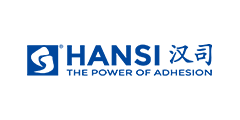Classification of Industrial Glues

In this article, HANSI will introduce the classification of industrial glues.
Can be one-component or two-component, heat and room temperature curing. High bond strength to most substrates, sometimes even exceeding the strength of the substrate itself. Epoxies are very hard, chemical, and weather resistant. Can be designed as thermally and electrically conductive epoxy.
A structural adhesive with a broad bond range, including most types of plastics, lightly treated, and untreated metals. It can be divided into two-component catalytic curing, one-component UV curing, or thermal curing. Flexibility can be good to very good, with weather resistance. Fast curing.
One-component adhesive/sealant that cures only in the absence of air. Used for thread locking, cylindrical retention, pipe thread sealing, flat sealing, etc.
The one-part adhesive cures instantly upon contact with metal surfaces. Most substrates have good adhesion and high strength. Available in different viscosities, cure speeds, void filling capabilities, and surface compatibility.
Can be one or two-component, heat, and ambient curing. High bond strength to most substrates, sometimes even exceeding the strength of the substrate itself. Epoxies are very hard, chemical, and weather resistant. Can be designed as thermally and electrically conductive epoxy.
A thermoplastic material that, after being melted in a sizing machine, wets the surface of a substrate and solidifies to form a bond when cooled. It cures quickly and is not a true structural adhesive, but bonds to a wide range of substrates.
One-component or two-component, good adhesion to thermoplastic and thermosetting plastics with slight surface treatment. Has good flexibility and durability. There are three curing methods: catalytic curing, thermal curing, and evaporative solvent curing. Generally slow curing.
One-part silicone adhesive/sealant that cures a tough solid by moisture curing. Has good weather resistance, abrasion resistance, moisture, and chemical resistance. Operating temperature from -76°F to 600°F(-24°C-315°C)
One-component, solvent-free, UV and visible light curing adhesives for bonding, coating, potting, and sealing. Cures within seconds of exposure to UV or visible light.
- +1 Like
- Add to Favorites
Recommend
- Power Glory Supports Industrial Instrumentation Applications
- Silicone Glass Glues Restrictions
- Remote Communication Solutions for 4G Industrial Routers Bring Many Conveniences to the Industrial Field
- Industrial AC-DC Converter: Efficient Power Conversion for Industrial Applications
- Application of Industrial Computers in Industrial AI Defect Detection Systems
- Industrial AC-DC Converter: Transforming Power for Industrial Applications
- The Use of Fanless Industrial Computers ECS-ADP351 in Industrial Robots
- 5G Industrial Router Helps Industrial Applications
This document is provided by Sekorm Platform for VIP exclusive service. The copyright is owned by Sekorm. Without authorization, any medias, websites or individual are not allowed to reprint. When authorizing the reprint, the link of www.sekorm.com must be indicated.





























































































































































































































































































































































































































































































































































































































































































































































































































































































